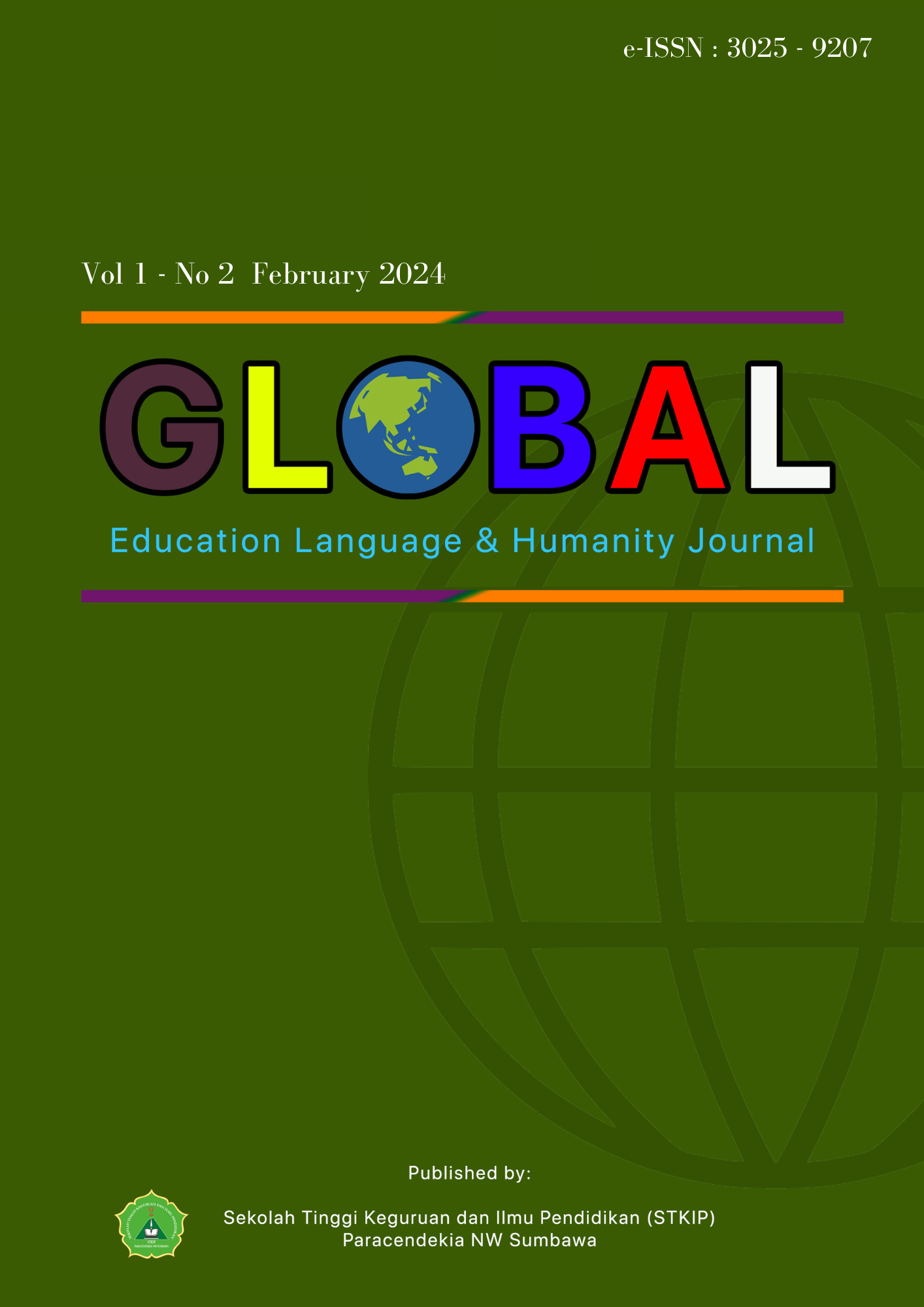ENHANCING READING INSTRUCTION WITH RECIPROCAL TEACHING: A FOCUS ON TECHNOLOGY INTEGRATION
Keywords:
reciprocal teaching, reading instruction, comprehension skills, collaborative learning, technology integration, critical thinking, literature reviewAbstract
The article highlights the importance of reciprocal teaching as a successful educational technique for improving reading abilities. Reciprocal teaching is an interactive strategy in which students act as instructors while using fundamental reading strategies like anticipating, clarifying, questioning, and summarizing. This adaptive strategy benefits students of all ages by improving essential reading abilities and comprehension skills; encourages active involvement, collaborative discussions, critical thinking, and interpretation, equipping students to confront complicated literary works and engage in intellectual debates. The study significantly supports the effectiveness of reciprocal instruction in enhancing reading comprehension, especially among struggling readers. Implementing reciprocal teaching requires a systematic method, with teachers gradually delegating responsibilities to students while modelling strategies. Integrating technology tools such as digital storytelling, virtual book clubs, and online collaboration platforms improves reciprocal teaching by adapting to different learning styles and keeping it relevant in the digital age. Educators who embrace reciprocal teaching can actively engage children, build critical thinking abilities, and instil a love of reading, ultimately contributing to a comprehensive and inclusive literacy program.
References
Anderson, K. (2020). Epic! - Books for Learners. [Mobile application software]. Retrieved from https://www.getepic.com/
CAST. (2018). Universal Design for Learning Guidelines version 2.2. Retrieved from http://udlguidelines.cast.org
Chiong, C., & Shuler, C. (2010). Learning: Is there an app for that. In Investigations of young learners’s usage and learning with mobile devices and apps. New York: The Joan Ganz Cooney Center at Sesame Workshop (pp. 13-20).
Edyburn, D. L. (2013). Inclusive technologies: Tools for helping diverse learners achieve academic success. Bridgepoint Education, Incorporated.
Google. (n.d.). Google Docs. Retrieved from https://docs.google.com/
Hacker, D. J., & Tenent, A. (2002). Implementing reciprocal teaching in the classroom: Overcoming obstacles and making modifications. Journal of Educational Psychology, 94(4), 699.
Hobbs, R. (2011). Digital and media literacy: Connecting culture and classroom. Corwin Press.
Kerkhoff, S. N., & Spires, H. A. (2012). Critical Perspectives on Global Literacies.
Kim, H., & Lee, J. H. (2018). The value of digital storytelling as an L2 narrative practice. The Asia-Pacific Education Researcher, 27, 1-9.
Koedinger, K. R., McLaughlin, E. A., & Stamper, J. C. (2012). Automated Student Model Improvement. International Educational Data Mining Society.
Kolb, D. A. (2014). Experiential learning: Experience as the source of learning and development. FT press.
Learning A-Z. (n.d.). Raz-Learners. [Online platform]. Retrieved from https://www.raz-learners.com/
Marsh, J., & Larson, J. (2014). Making literacy real: Theories and practices for learning and teaching. Making Literacy Real, 1-216.
McKeown, M. G., Beck, I. L., & Blake, R. G. (2009). Rethinking reading comprehension instruction: A comparison of instruction for strategies and content approaches. Reading research quarterly, 44(3), 218-253.
McKeown, M. G., Beck, I. L., & Blake, R. G. (2009). Rethinking reading comprehension instruction: A comparison of instruction for strategies and content approaches. Reading research quarterly, 44(3), 218-253.
Microsoft. (n.d.). Microsoft Word Online. Retrieved from https://www.office.com/
Monti, J., & Raffone, A. (2019). A digital storytelling laboratory to foster second language acquisition in higher education: Students’ perspectives and reflections. In Conference Proceedings 12th International Conference Innovation in Language Learning. ITA.
Oczkus, L. D. (2018). Reciprocal teaching at work: Powerful strategies and lessons for improving reading comprehension. ASCD.
Okkinga, M., van Steensel, R., van Gelderen, A. J., & Sleegers, P. J. (2018). Effects of reciprocal teaching on reading comprehension of low‐achieving adolescents. The importance of specific teacher skills. Journal of research in reading, 41(1), 20-41.
Palinscar, A. S., & Brown, A. L. (1984). Reciprocal teaching of comprehension-fostering and comprehension-monitoring activities. Cognition and instruction, 1(2), 117-175.
Piaget, J. (1970). Piaget's theory (Vol. 1, pp. 703-732). New York: Wiley.
Popp, M. S. (2006). Teaching language and literature in elementary classrooms: A resource book for professional development. Routledge.
Puentedura, R. R. (2006). Transformation, technology, and education. Retrieved from http://hippasus.com/resources/tte/
Reigeluth, C. M. (Ed.). (2013). Instructional-design theories and models: A new paradigm of instructional theory (Vol. 2). Routledge.
Reinking, D., McKenna, M. C., Labbo, L. D., & Kieffer, R. D. (Eds.). (1998). Handbook of literacy and technology: Transformations in a post-typographic world. Routledge.
Rose, D. H., & Meyer, A. (2002). Teaching every student in the digital age: Universal design for learning. Association for Supervision and Curriculum Development, 1703 N. Beauregard St., Alexandria, VA 22311-1714 (Product no. 101042: $22.95 ASCD members; $26.95 nonmembers).
Rosenshine, B., & Meister, C. (1992). The use of scaffolds for teaching higher-level cognitive strategies. Educational leadership, 49(7), 26-33.









